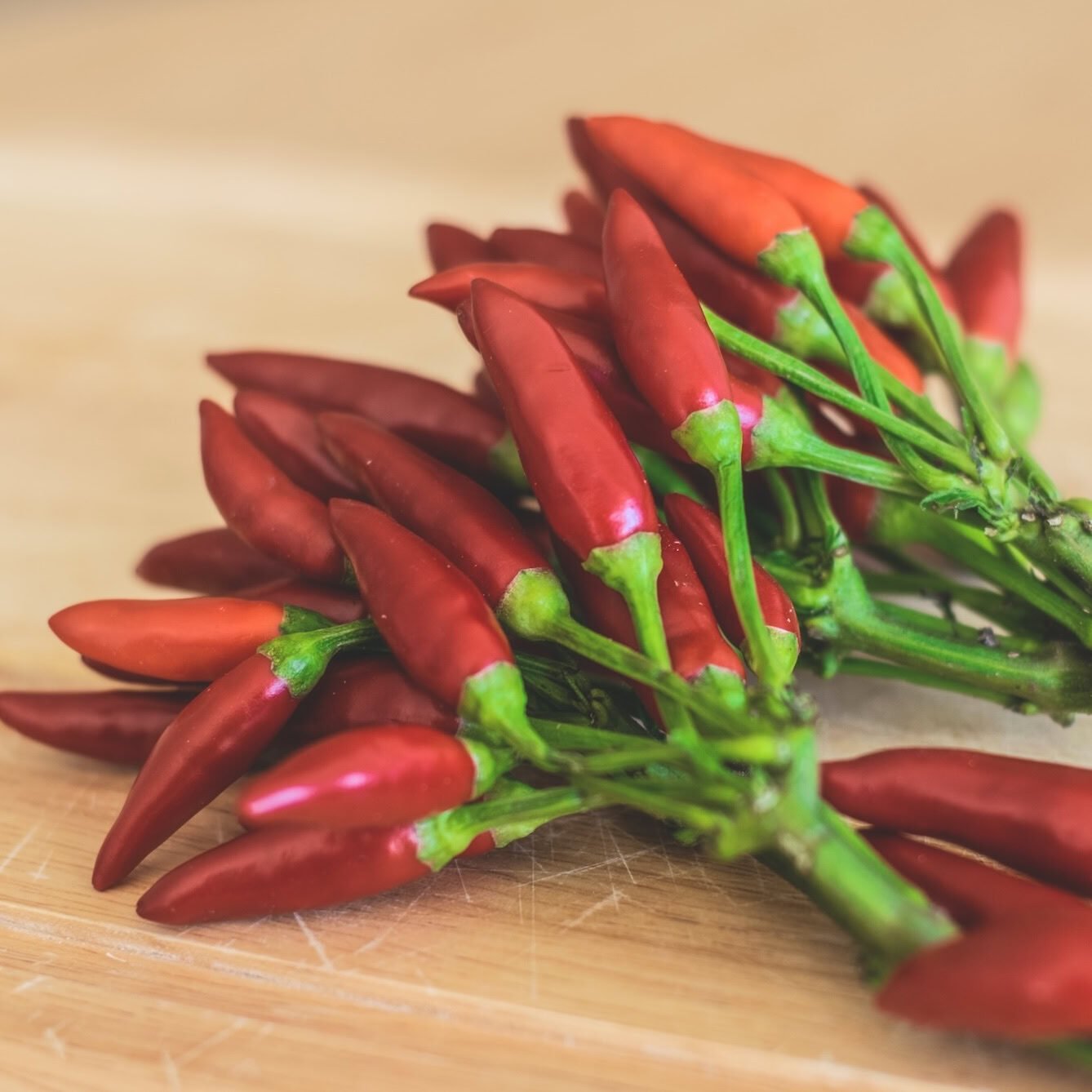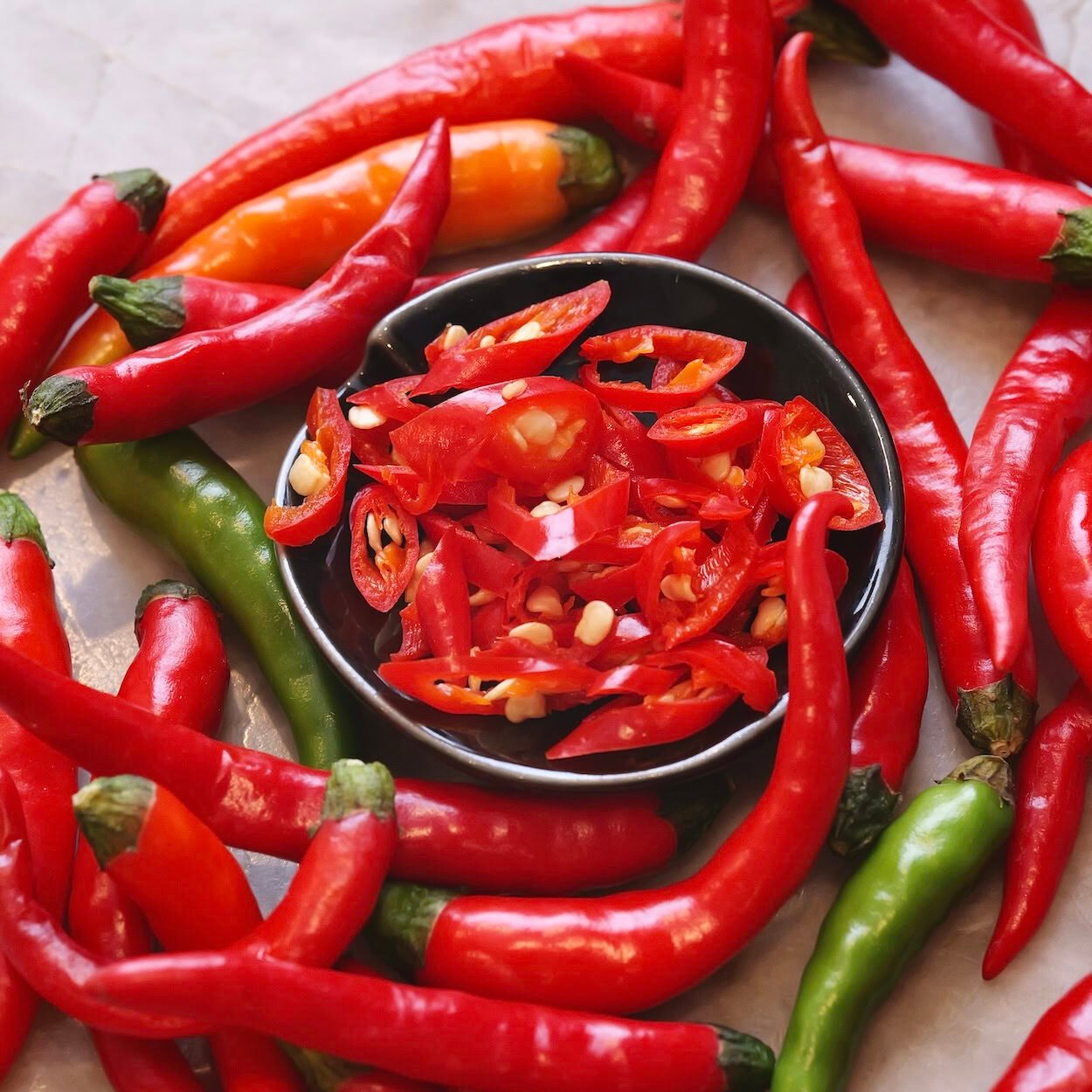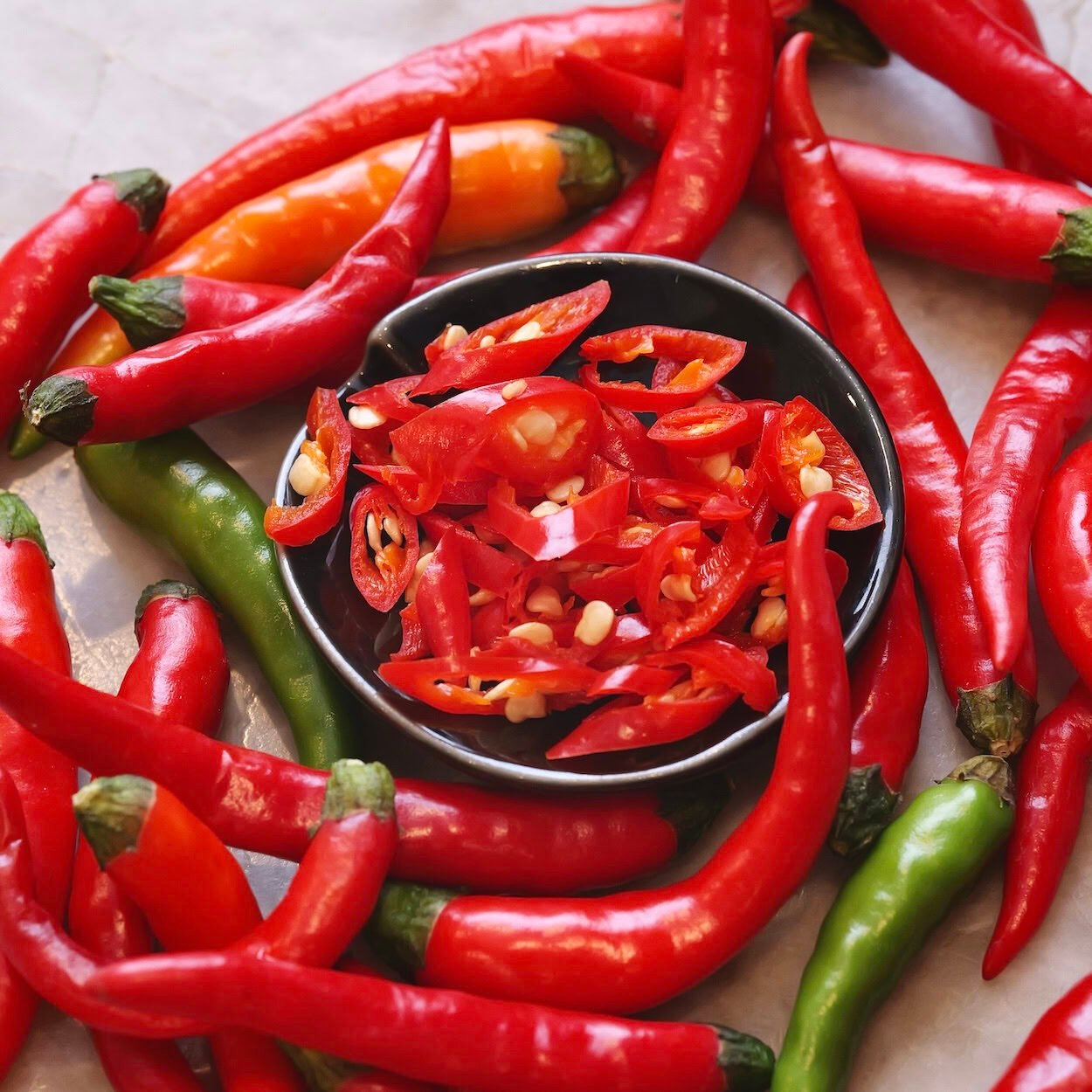Chile Peppers
Chile peppers, or chilis, are the spices produced from the spicy fruits of 5 species in the genus Capsicum, part of the nightshade family. There are tens of thousands of cultivars among the 5 species:
Capsicum annuum: jalapeño, serano, cayenne, poblano
Capsicum chinense: habanero, ghost pepper, Scotch bonnet
Capsicum baccatum: ají amarillo, ají limón, ají cristal
Capsicum frutescens: tabasco, malagueta, piri piri, thai chili
Capsicum pubescens: rocoto, manzano

REGION OF ORIGIN
Chiles are indigenous to the Americas in a vast region spanning modern-day Mexico and Northern South America. C. annuum originated in Central Mexico, C. chinense in the Amazon, C. baccatum in the Andes, C. pubescens in Bolivia and Peru, and C. frutescens in Central and South America.
PART & COLOR
Chile fruits (technically berries) have a fleshy outer wall that contains the spicy capsaicinoids and encloses the seeds. Chiles are prone to hybridization, leading to an astonishing immensity of variety. There are tens of thousands of cultivars, each with unique flavors, heat, shapes, and sizes, from small, round balls to skinny, elongated pods. The colors span a vibrant spectrum as well: greens, yellows, oranges, reds, purples, browns, and even jet black if smoked long enough.
HARVEST
Chiles are planted in the spring and are harvested after 60-150 days. It's a wide range because picking them at different stages of ripeness creates different flavors and heat levels. Younger chiles tend to be brighter and sharper, while fully ripened ones become sweeter and often carry more heat.

FLAVOR & AROMA PROFILE
Chile peppers ignite the senses with their vibrant aroma and complex flavor profile, ranging from sweet and fruity to smoky and intensely hot. Their unique scent, a blend of grassy, vegetal, and fruity notes, carries a hint of heat that tickles the nostrils, foreshadowing the fiery experience to come. The flavor journey of chile peppers is a captivating, multi-sensory dance of heat and sweetness. The heat lingers, building on the tongue and spreading throughout the body. Chile qualities vary dramatically: some varieties are rather mellow and sweet while others unleash an intense burn.
The hot varieties make chile peppers the undisputed king of heat in the spice world. The intensity of this burning sensation differs due to varying concentrations of capsaicinoids (measured in Scoville heat units). These compounds bind to receptors in our mouth and throat that sense heat and pain, tricking them into thinking there's actual heat. Peppers with a high SHU, like ghost peppers, can induce sweating and even tears. Heat preferences also vary widely across cultures and people—some love the fire and others can’t stand it. But the wide world of chiles has something for everyone. It is fun and worthwhile to try answering the question, “Out of the many thousands of chile varieties, which suits me best?”
CULINARY USES
Chiles can be used fresh or dried, or in various processed forms like powders, flakes, and pastes. Fresh peppers are highly versatile, often chopped, diced, or sliced into salsas, sauces, salads, and stir-fries. They explode into a dish with a vibrant burst of tasty heat. They can also be pickled or fermented, which creates a tangy complexity and extends their shelf life. Dried peppers are more concentrated. Their heat intensifies and their flavors develop a smoky, earthy, or fruity dimension depending on the variety and drying method. Ground peppers are frequently used in spice blends, like the uncountable types of chili powder, while whole dried peppers can infuse soups, stews, and sauces.
Chiles are ubiquitous in global gastronomy. Synonymous with Mexican cuisine, they are in everything: salsas, moles, tacos, enchiladas. Thai cuisine relies heavily on the heat of bird's eye chilis for curries and stir-fries. Similarly, Indian curries and chutneys wouldn't be the same without red, green, and Kashmiri chilis, as well as the famously intense Bhut Jolokia (ghost pepper). And we mustn't forget that the ever-popular spice paprika is essentially just a mild form of chili powder. Whether fresh or dried, light or fiery, chiles undoubtedly have a singular ability to transform a dish.



